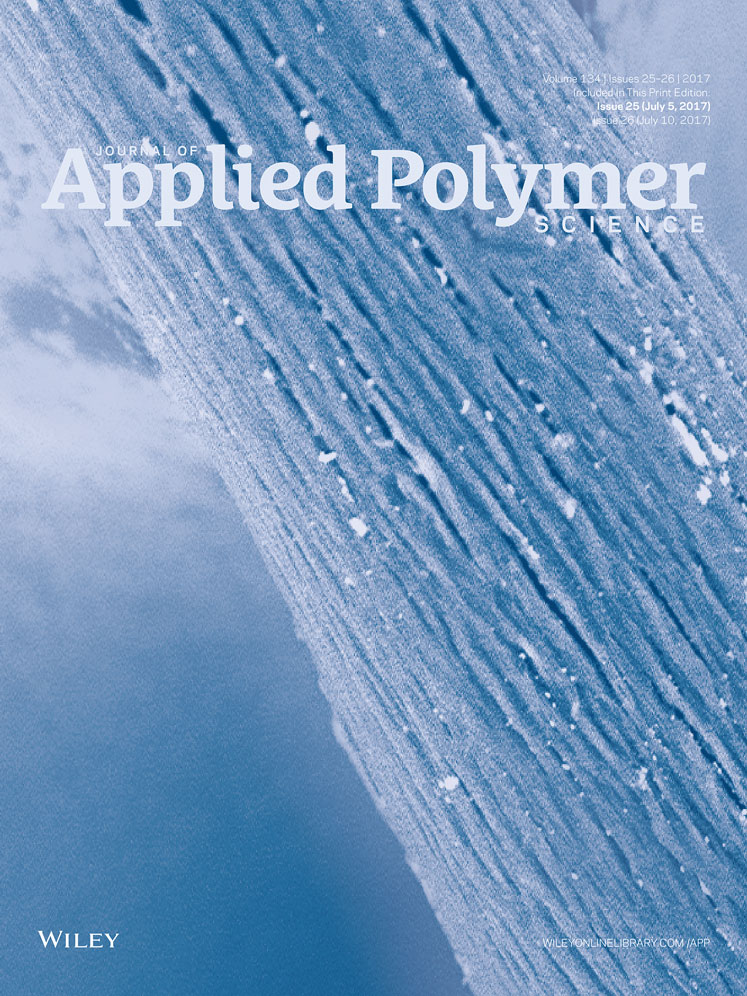Surface grafting of poly(pentafluorostyrene) on the iron and iron oxide particles via reversible addition fragmentation chain transfer (RAFT) polymerization
ABSTRACT
A surface grafting technique is reported for synthesis of poly(pentafluorostyrene) via reversible addition fragmentation chain transfer onto iron (iron oxide) particles. 4-Methoxydithiobenzoate is used for the RAFT chain transfer agent. The molecular weight, surface morphology, thickness, thermal properties, and monomer conversion of the grafted polymer are reported. The grafted poly(pentafluorostyrene)–iron particles show a higher thermal transition temperature compared to the nongrafted polymer because it is speculated that the covalent bond between the polymer backbone and the surface of the iron particles restricts the molecular mobility. The monomer conversion increases in proportion to the amount of chain transfer agent (CTA) concentration at early polymerization time. The grafted poly(pentafluorostyrene) shows a “hairy” like polymer architecture with fibril thickness in the range of 80 to 100 nm. A thin coating is expected to maintain the magnetic saturation properties of iron particles. To the best of our knowledge, this is the first time that poly(pentafluorostyrene) has been grafted onto the iron particles utilizing RAFT and 4-methoxydithiobenzoate as a CTA. © 2017 Wiley Periodicals, Inc. J. Appl. Polym. Sci. 2017, 134, 44898.




